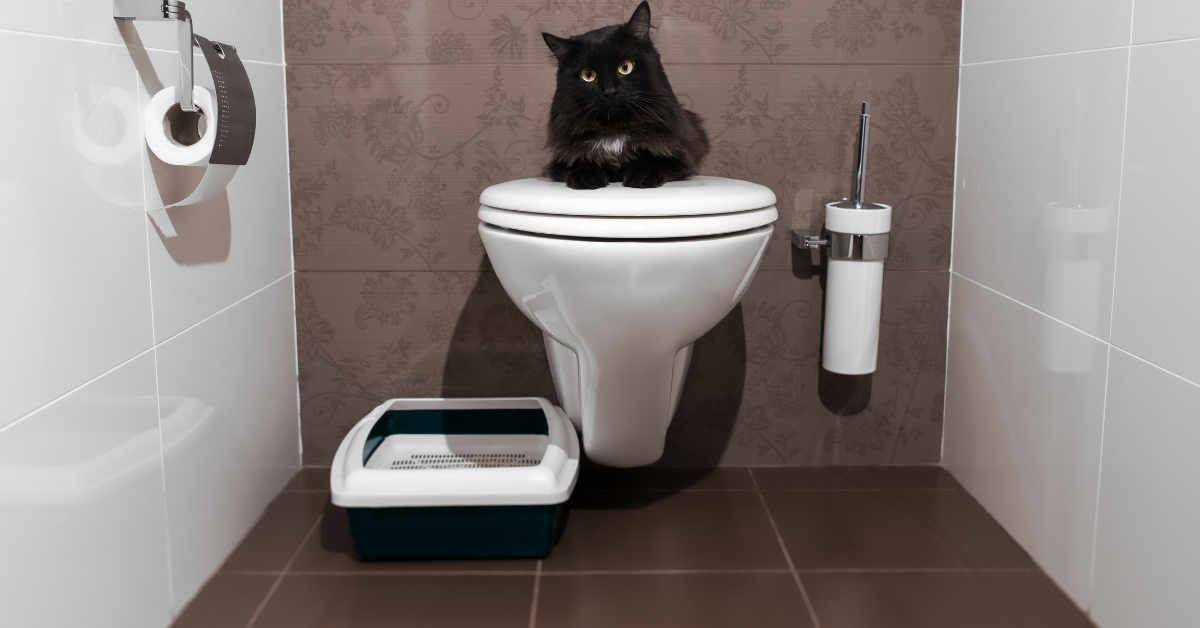In this article below you will discover more worthwhile insight relating to How to Dispose of Cat Poop and Litter Without Plastic Bags.

Introduction
As cat proprietors, it's important to be mindful of just how we take care of our feline close friends' waste. While it may seem hassle-free to flush cat poop down the commode, this method can have damaging repercussions for both the environment and human wellness.
Alternatives to Flushing
Thankfully, there are more secure and extra responsible means to throw away pet cat poop. Think about the complying with choices:
1. Scoop and Dispose in Trash
The most usual technique of getting rid of feline poop is to scoop it into a naturally degradable bag and toss it in the trash. Make certain to utilize a specialized litter inside story and get rid of the waste promptly.
2. Use Biodegradable Litter
Go with eco-friendly pet cat trash made from materials such as corn or wheat. These trashes are eco-friendly and can be safely gotten rid of in the trash.
3. Bury in the Yard
If you have a backyard, take into consideration burying pet cat waste in an assigned area far from vegetable yards and water sources. Be sure to dig deep sufficient to avoid contamination of groundwater.
4. Mount a Pet Waste Disposal System
Purchase a pet waste disposal system especially developed for feline waste. These systems make use of enzymes to break down the waste, reducing odor and environmental effect.
Wellness Risks
Along with environmental issues, flushing pet cat waste can additionally pose health and wellness dangers to people. Pet cat feces might consist of Toxoplasma gondii, a bloodsucker that can cause toxoplasmosis-- a potentially serious ailment, particularly for expecting females and individuals with damaged immune systems.
Ecological Impact
Purging cat poop introduces unsafe pathogens and parasites into the water system, posturing a substantial risk to aquatic communities. These pollutants can adversely impact marine life and compromise water quality.
Conclusion
Responsible animal ownership extends beyond providing food and shelter-- it likewise involves correct waste administration. By avoiding purging feline poop down the bathroom and selecting alternate disposal techniques, we can decrease our ecological impact and protect human health.
Why Can’t I Flush Cat Poop?
It Spreads a Parasite
Cats are frequently infected with a parasite called toxoplasma gondii. The parasite causes an infection called toxoplasmosis. It is usually harmless to cats. The parasite only uses cat poop as a host for its eggs. Otherwise, the cat’s immune system usually keeps the infection at low enough levels to maintain its own health. But it does not stop the develop of eggs. These eggs are tiny and surprisingly tough. They may survive for a year before they begin to grow. But that’s the problem.
Our wastewater system is not designed to deal with toxoplasmosis eggs. Instead, most eggs will flush from your toilet into sewers and wastewater management plants. After the sewage is treated for many other harmful things in it, it is typically released into local rivers, lakes, or oceans. Here, the toxoplasmosis eggs can find new hosts, including starfish, crabs, otters, and many other wildlife. For many, this is a significant risk to their health. Toxoplasmosis can also end up infecting water sources that are important for agriculture, which means our deer, pigs, and sheep can get infected too.
Is There Risk to Humans?
There can be a risk to human life from flushing cat poop down the toilet. If you do so, the parasites from your cat’s poop can end up in shellfish, game animals, or livestock. If this meat is then served raw or undercooked, the people who eat it can get sick.
In fact, according to the CDC, 40 million people in the United States are infected with toxoplasma gondii. They get it from exposure to infected seafood, or from some kind of cat poop contamination, like drinking from a stream that is contaminated or touching anything that has come into contact with cat poop. That includes just cleaning a cat litter box.
Most people who get infected with these parasites will not develop any symptoms. However, for pregnant women or for those with compromised immune systems, the parasite can cause severe health problems.
How to Handle Cat Poop
The best way to handle cat poop is actually to clean the box more often. The eggs that the parasite sheds will not become active until one to five days after the cat poops. That means that if you clean daily, you’re much less likely to come into direct contact with infectious eggs.
That said, always dispose of cat poop in the garbage and not down the toilet. Wash your hands before and after you clean the litter box, and bring the bag of poop right outside to your garbage bins.
https://trenchlesssolutionsusa.com/why-cant-i-flush-cat-poop/

As a serious person who reads about Can You Flush Cat Poop Down The Toilet?, I figured sharing that excerpt was a smart idea. Sharing is good. Helping people is fun. We recognize the value of reading our article about Can You Flush Cat Poo or Litter Down the Toilet?.
Book Appointment